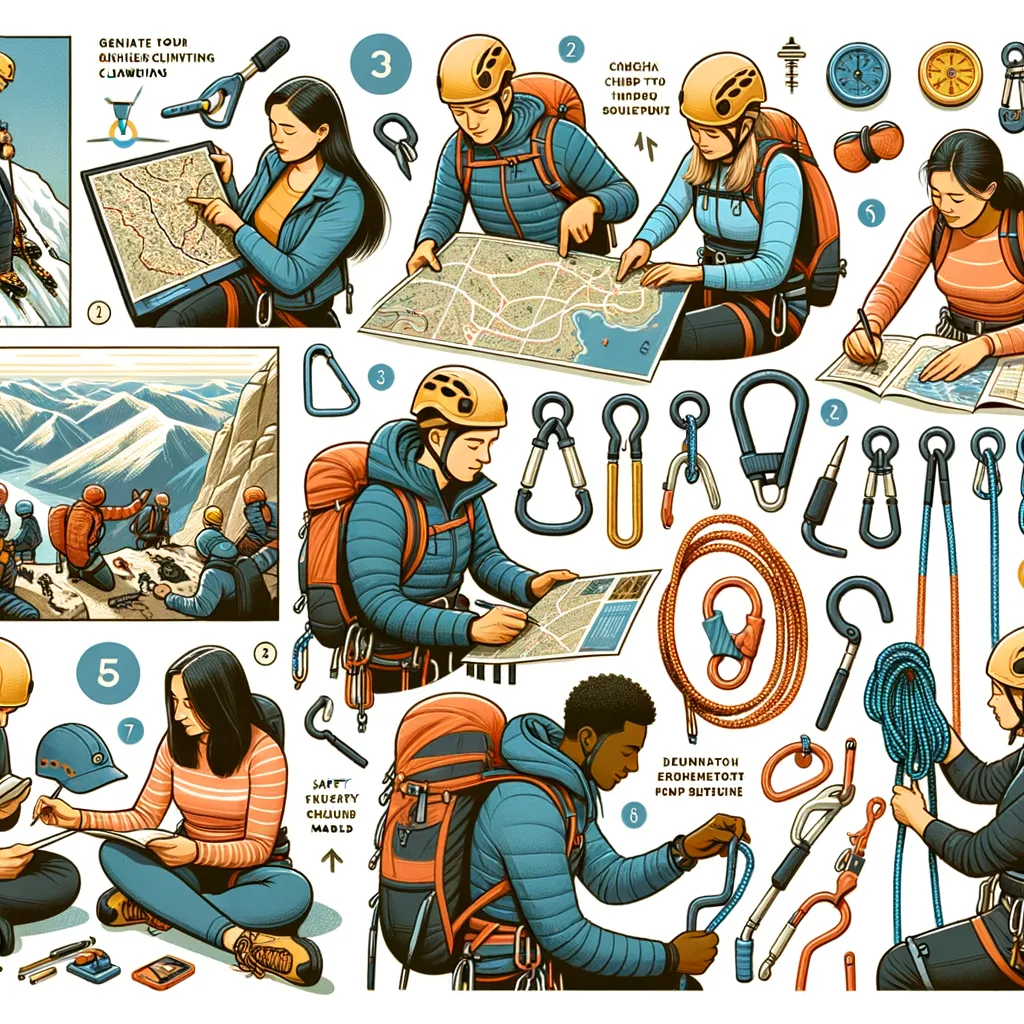Embarking on an Adventure: How to Start Mountain Climbing for Beginners
Welcome, adventurous parents and young explorers! If you’re seeking ways to introduce your family to the thrilling world of mountain climbing, you’re in the right place. Mountain climbing offers an exhilarating blend of physical challenge and nature immersion. It’s a fantastic opportunity for families to bond, learn valuable skills, and create lifelong memories. This beginner’s guide is designed to walk you through the initial steps of starting your mountain climbing journey, ensuring a safe and joyous experience for everyone involved.
Understanding Mountain Climbing
Mountain climbing, or mountaineering, is more than just a sport or hobby. It’s an adventure that teaches resilience, respect for nature, and the importance of preparation and teamwork. Before you lace up your boots and hit the closest peak, it’s crucial to understand the different types of mountain climbing:
- Hiking: Often considered the starting point for mountain climbing, involving walks on well-defined trails. It’s ideal for families new to the outdoors.
- Trekking: More challenging than hiking, trekking involves longer distances across varied terrains, sometimes requiring overnight camping.
- Rock Climbing: Focused on ascending rock formations using specialized gear and techniques. It can be done indoors or outdoors.
- Mountaineering: Combines hiking, trekking, and rock climbing to summit high peaks. It often involves navigating through snow and ice.
Benefits of Mountain Climbing for Families
Mountain climbing is not only about reaching the top; it’s about the journey. Here are some benefits of involving your family in mountain climbing:
- Enhances Physical Fitness: Climbing strengthens muscles, increases endurance, and improves balance and flexibility.
- Promotes Mental Wellbeing: Navigating through nature can reduce stress, boost mood, and enhance focus and problem-solving skills.
- Teaches Life Skills: Children learn valuable lessons in responsibility, perseverance, and decision-making.
- Encourages Teamwork: Climbing as a family fosters communication, trust, and support.
- Connects with Nature: Experiencing the beauty of the outdoors can instill a lifelong appreciation for the environment.
Getting Started: Equipment and Preparation
Proper preparation is the key to a successful and enjoyable mountain climbing experience. Here’s how to get started:
Choosing the Right Gear
Equip your family with the basics of mountain climbing gear. For beginners, here is a list of essential items:
- Footwear: Invest in high-quality hiking boots that offer support, comfort, and durability.
- Clothing: Dress in layers to adapt to changing weather conditions. Include moisture-wicking base layers, insulating layers, and a waterproof outer layer.
- Backpack: A sturdy backpack with enough capacity for your gear, food, and water is crucial.
- Navigation Tools: Familiarize yourself with maps, compasses, and GPS devices to ensure you can always find your way.
- Safety Equipment: Basic first aid kits, headlamps or flashlights, and a whistle for emergencies are must-haves.
Finding the Right Mountain
Start small and choose beginner-friendly peaks or trails. Research and select mountains that match your family’s fitness level and climbing skills. Local hiking clubs, mountaineering organizations, and park rangers can be excellent resources for recommendations.
Starting your mountain climbing journey as a family is an exciting venture. It’s a chance to discover new landscapes, challenge yourselves, and foster a deep connection with each other and the natural world. As you prepare for your first climb, remember that the goal is not only to reach the summit but to enjoy every step along the way.
Stay tuned for more tips on turning your mountain climbing dreams into reality, including training exercises, safety protocols, and how to make every climb an enriching family adventure.

Five Essential Tips for Parents Venturing into Mountain Climbing: A Beginner’s Guide
Embarking on a mountain climbing journey as a family is both exciting and challenging. It’s a unique way to strengthen bonds, enjoy the outdoors, and introduce your children to the adventure and discipline of mountain climbing. To help you start on the right foot, here are five critical things parents should know when preparing for mountain climbing, woven into your comprehensive guide for an unforgettable family experience.
1. Prioritize Safety and Education
Before you even plan your first climb, it’s vital to educate yourself and your family on the basics of mountain safety. Acquire knowledge about the mountain you intend to climb, understand weather patterns, and learn about potential risks. Enroll in a beginner’s mountain climbing course if possible, which often covers essential safety techniques, use of climbing gear, and first aid. Remember, being prepared is the first step towards ensuring a safe climbing experience.
2. Gradually Build Physical Fitness
Mountain climbing is physically demanding, and it’s important to ensure that all family members are adequately prepared for the challenge. Start with regular walks and hikes to build endurance. Gradually increase the distance and elevation over time. Engage in exercises that strengthen core muscles, enhance balance, and improve flexibility. Encouraging family workouts can also serve as a great bonding activity while preparing for your climbing adventure.
3. Invest in Quality Climbing Gear
Having the right gear is crucial for a successful and enjoyable mountain climbing experience. Invest in durable, high-quality equipment that offers protection and comfort. Ensure that each family member has appropriately sized gear, especially footwear, to prevent blisters and discomfort during climbs. Additionally, teach your children how to use and care for their equipment, as this will instill responsibility and a sense of ownership over their climbing experience.
4. Choose Your Climbs Wisely
As beginners, it’s important to start with less challenging mountains that match your family’s current fitness level and experience. Research thoroughly and select destinations known for their scenic beauty as well as their beginner-friendly trails. Starting with easier climbs will help build confidence and skills gradually, making the transition to more challenging peaks smoother and more enjoyable.
5. Foster a Positive Attitude Towards Learning and Challenge
Mountain climbing offers numerous teachable moments and opportunities for personal growth. Encourage your children to view challenges as opportunities to learn rather than obstacles. Foster an atmosphere of patience, encouragement, and positivity. Celebrate each milestone, no matter how small, and instill in your children the values of perseverance, determination, and respect for nature.
Starting your mountain climbing journey requires thorough preparation, the right mindset, and an unwavering commitment to safety. By focusing on these five essential tips, you can ensure that your family’s introduction to mountain climbing is not only safe but also immensely rewarding. Remember, the goal of mountain climbing as a family should be to enjoy the process, learn new skills, and create lasting memories together. With the right preparation and attitude, you’ll be well on your way to sharing many successful climbs and adventures with your loved ones.
As you move forward with planning your climbs, keep in mind the importance of continuous learning and adaptation. Mountain climbing is a dynamic activity, with each climb presenting its own set of challenges and rewards. Embrace these experiences, and let them enrich your family’s bond and love for the great outdoors. Your mountain climbing adventures await, promising a world of discovery and adventure for you and your family to conquer together.
Disclaimer
The articles available via our website provide general information only and we strongly urge readers to exercise caution and conduct their own thorough research and fact-checking. The information presented should not be taken as absolute truth, and, to the maximum extent permitted by law, we will not be held liable for any inaccuracies or errors in the content. It is essential for individuals to independently verify and validate the information before making any decisions or taking any actions based on the articles.




